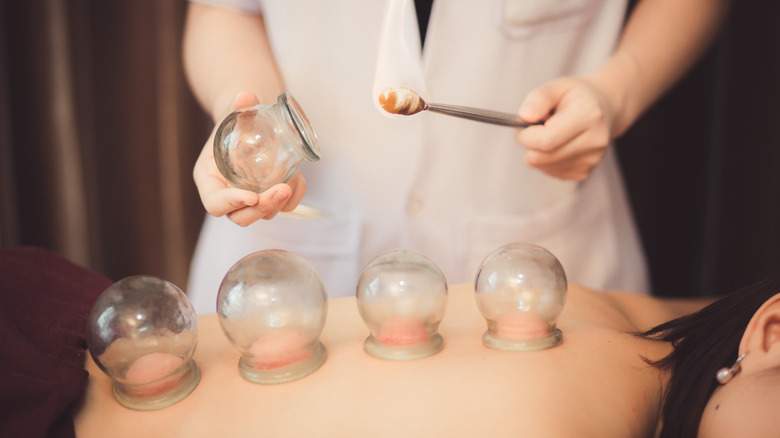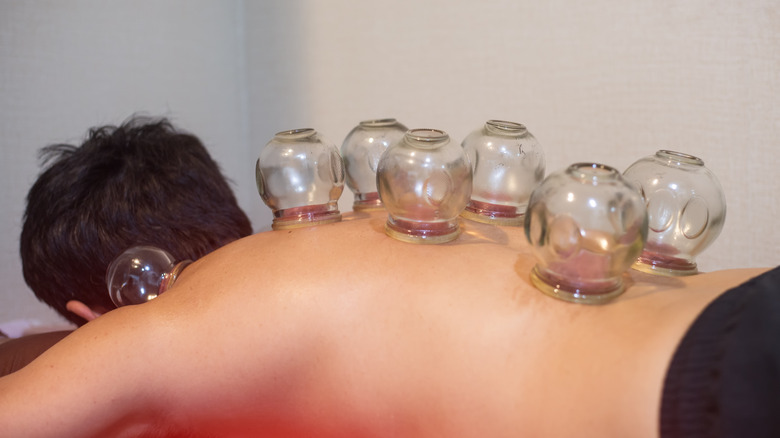What Cupping Really Does To Your Body
Cupping is a form of therapy in which anywhere between three to seven heated cups are placed on the skin to promote healing and soothe sore muscles (via WebMD). The rounded cups stay in place for several minutes, and the suction created forces blood to the surface, sometimes resulting in bruises. Dry cupping involves a heated cup on dry skin. With wet cupping, a medical professional punctures the skin with a needle (via Cleveland Clinic). Many ancient cultures have used these techniques, but what exactly happens to your body during a cupping session?
The idea behind cupping is to reduce pain and boost healing through increased blood flow and circulation. Licensed acupuncturist Anna Brantman, from Cedars-Sinai Integrative Health, says that many of her patients usually feel the results of cupping immediately. One 2015 report showed that cupping could help manage pain as well as treat acne, herpes zoster, and facial paralysis. During some sessions, the cups may be placed on acupressure points, which may in turn treat skin and digestion problems as well as other ailments for which acupressure is used (via Healthline). Other claims allege wet cupping removes toxins from the blood, but more research is needed (via WebMD).
What to expect from a cupping session
Both types of cupping techniques are similar. A dry cupping session includes placing the cup on areas of dry skin. The suction creates a vacuum, pulling the skin, muscles and other tissue into the cup. The practitioner may leave the cup in place for five to ten minutes before removal. During a wet cupping session, the professional removes the cup after just a few minutes and makes a prick with a needle, sometimes replacing the cup. After a session, the skin is treated with a salve to prevent infections.
Cupping is generally considered a safe practice. However, some patients might experience burns. Other risks include skin infections, itching, or scarring. Muscle soreness, headaches, and nausea might also occur after a treatment (via Cleveland Clinic).
If you have any bleeding disorders, blood clotting problems, or a history of stroke, you should consult with your healthcare provider before making an appointment with a cupping specialist. Likewise, those with sensitive skin or those who suffer from seizures should also seek medical advice before a cupping session.


